How to live at peace in your body this year.

“I just want to feel like me again.” She said in soft slow tones explaining why she wanted to be photographed, “Last year was a hell of a year and to be honest I got really lost. I want to feel at home in my body. I’m getting older and my body is changing. I want to love myself again because I’ve lost my way. I don’t remember who I am. Life has gotten so busy and I have to handle so much to do, so many people to take care of. I’ve forgotten who I truly am. I don’t know what it means to be me, I want to remember that.”
This is what my clients share with me Every. Single. Day. It’s so common, I’ve come to understand it as the new American anthem. People have lost their identity. They say, “Help me find me. Help me love my skin, organs, muscles, and bones. My body is changing. I’m getting older and if I can’t love myself now, when can I?” Or they say, “I want to look back on this body and appreciate it.”
Some days I hear the opposite. “For so long I’ve hated this body and now we’ve come to speaking terms. I’ve worked hard to get here I want you to document me. I am ready to be photographed”
Most people would agree, when we feel great we give the world our best. We show up for others. When we feel beautiful, when we own the space, when we carry our weight with pride, when we feel strong and hold our head high, despite all the things we were taught to hate about ourselves, we live our best lives. But how?
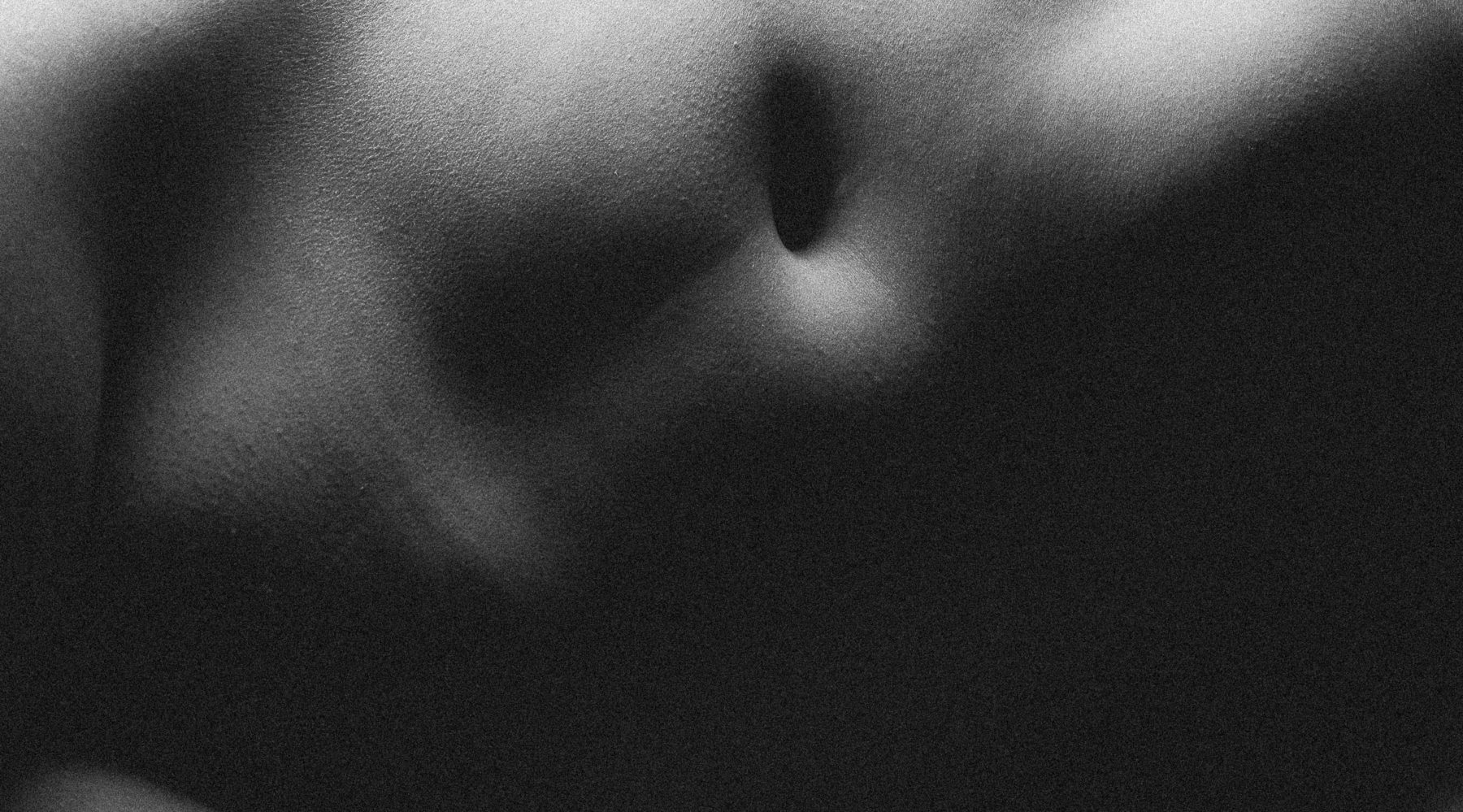
I work in the business of bodies. Specifically, I photograph them as a boudoir photographer. In simpler terms, I make space for people to play dress up. They get made up, strip down, try on different identities and clothes and peel off false ideals like onion layers off of their soul. They explore relationships with themselves or others in a safe place.
But this story didn’t begin as a photographer. It started 19 years ago when I played guitar in an idealistic punk rock band and penned the words in an anti-body dysmorphic anthem “Covergirl, you’ve been lied to and you’ve been tricked”.
The song goes on saying “I want you to love me for who I am.” Present-day Mike is still asking the same questions as high school Mike, “Are we our bodies?” and “What is acceptance?”
Before I dove into the question of body, soul, mind connection I had some personal work to do.
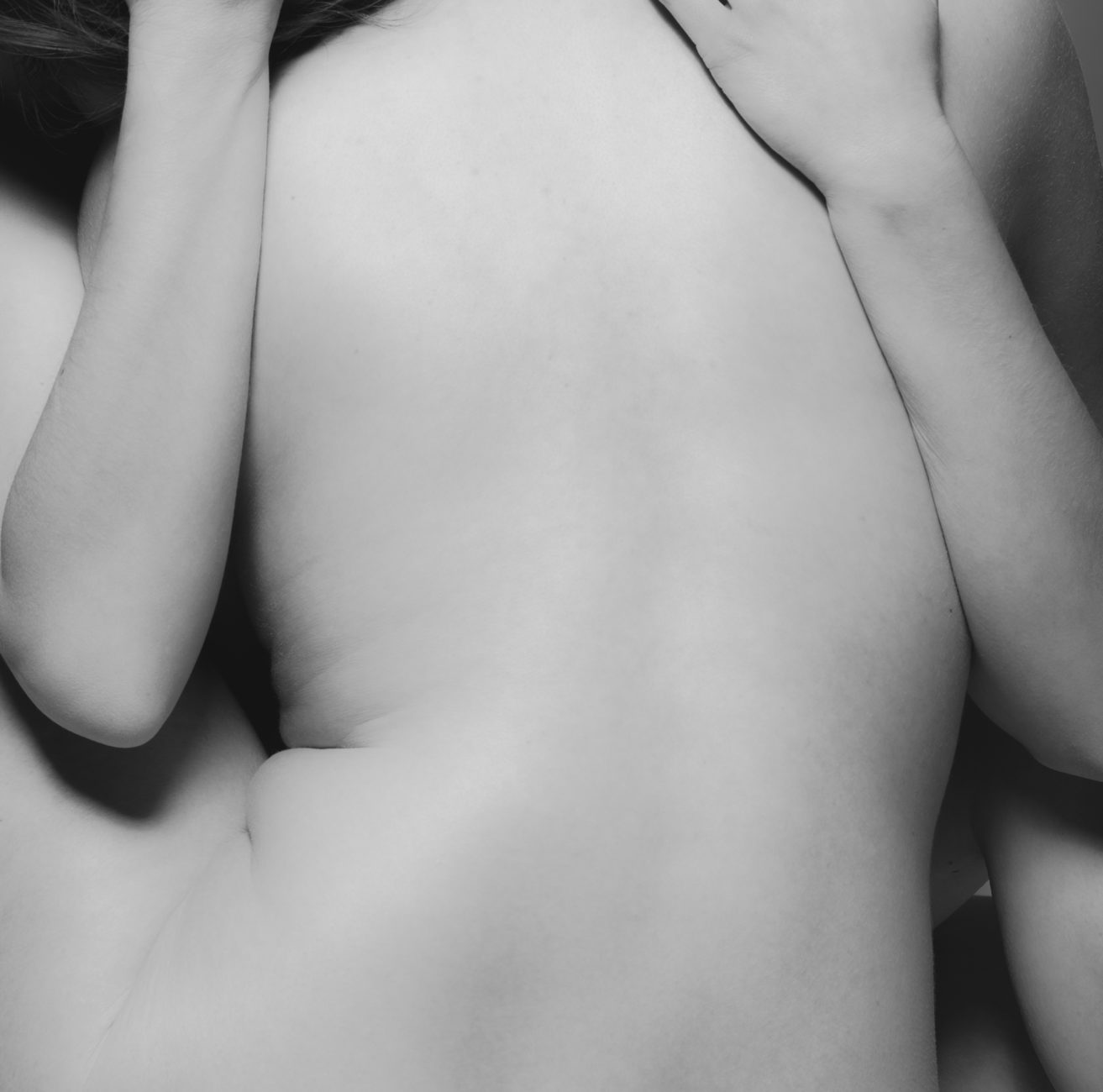
Living in a Culture of Body Dysmorphia
As a photographer, I’ve gotten to watch hundreds of people see their photos for the first time. It’s amazing to experience people seeing their photos for the first time and squealing with joy. “I can’t believe that’s me!!!”
And occasionally watching them notice things no one else would notice or things that aren’t there. I’ve photographed people medically diagnosed with Body Dysmorphic Disorder, a condition that affects 2.4% of the population. This condition causes people to obsess over parts of their bodies in an OCD way. It causes people to see their bodies in ways other people can’t see or imagine. What does that leave the rest of us with? If we haven’t been diagnosed, what is it that we have?
Body-negativity is the only term I can think of. I think we are living in a culture of body negativity. It sells. We are the collateral damage from years of marketing, messages, and media saying “we are not enough.”
Although we don’t have the disorder, the same messages have soaked down to our soul.
I will love my body when….
I will love my body if…
I will be worthy when…
And at the end of each of these statements is a host of companies selling products promising that result. The rhythmic drumming beats of the American marketing machine “You Are Not Enough.” Hundreds of times a day we hear that in subtle ways.
No wonder why we struggle to love the skin we are in.
I asked Teri Ledgerwood, founder of Body Image Bootcamp, why people are uncomfortable in their own skin. She said, “There are a plethora of reasons starting with the way our brain is wired for survival, comparison theory, and negativity bias. Combine that with the over-representation of one body type (thin, white, blonde). Marketing understands the way to get people to spend money is to highlight and create problems where the only solution is for people to buy a product or service to rectify such ‘problems’. This causes us to feel like we don’t fit in. Then, you add in the people you surround yourself with who have their own believes about certain bodies and you grow believing that that is true, until you start to do the work necessary to combat it. People think they want to be individuals, but what they truly want is to be accepted as an individual.”
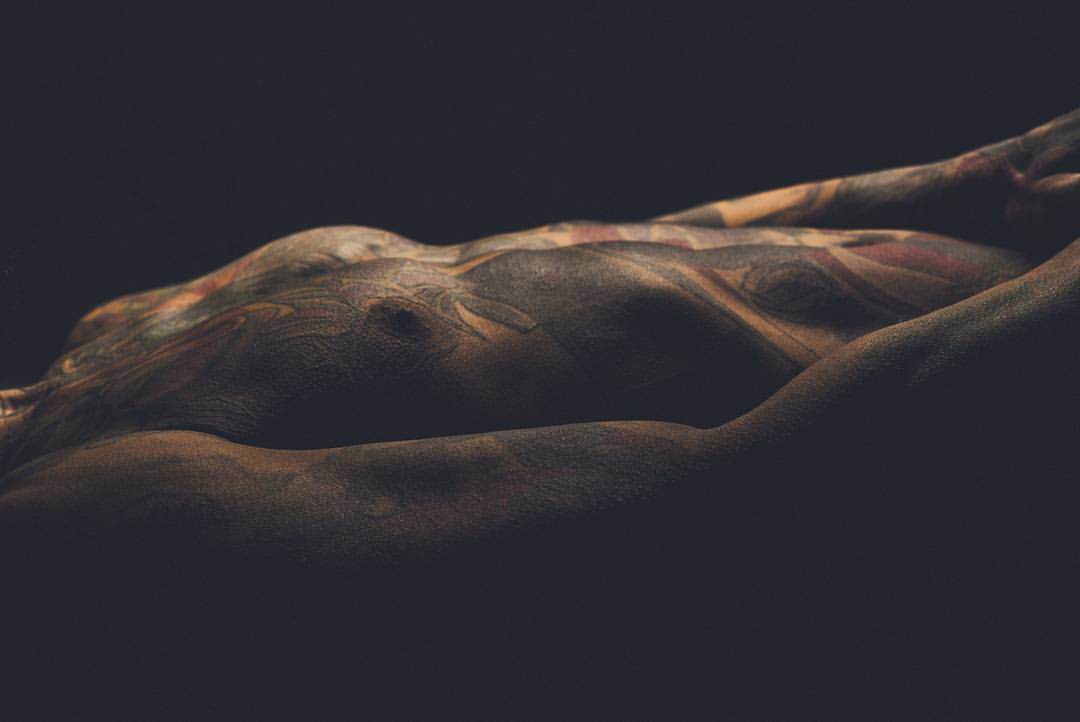
One of the biggest surprises as a photographer has been seeing this in all types of bodies, no matter their type or gender. Body negativity does not discriminate. I’ve seen this in men who are skinny, those who aren’t, and every single body type in between. I’ve seen this in muscular bodybuilders. Even worse, how athletic men compare their bodies to their bodies at 21. American culture has given us two extremes that most men don’t fit into. While I’ve found most women’s insecurity about their body is more prevalent in day-to-day experience, most men have low-grade body negativity. It only comes into play when the subject of photos is brought up or in swimming situations. With many males it doesn’t affect them on a daily basis, they just will not want their photos posts.
“We cultivate love when we allow our most vulnerable and powerful selves to be deeply seen and known, and when we honor the spiritual connection that grows from that offering with trust, respect, kindness and affection.”
Brené Brown
This is where I’m at and this is my work. When I love others, I love myself. When I love myself, I love others. When I accept, I am accepted. When I do the work myself, I allow others to do the work.
“When you go out into the woods, and you look at trees, you see all these different trees. And some of them are bent, and some of them are straight, and some of them are evergreens, and some of them are whatever. And you look at the tree and you allow it. You see why it is the way it is. You sort of understand that it didn’t get enough light, and so it turned that way. And you don’t get all emotional about it. You just allow it. You appreciate the tree. The minute you get near humans, you lose all that. And you are constantly saying ‘You are too this, or I’m too this.’ That judgment mind comes in. And so I practice turning people into trees. Which means appreciating them just the way they are.”
Ram Hass
Taking My Own Medicine
“Seeing yourself in a new light” is a phrase I love to use because this work is visual. Photography is light work. There is something magical and healing about seeing yourself in a new light, captured by a different human. To see yourself through new eyes is an incredible gift. So it was time to take my own medicine. I was photographed by 3 different photographers in 3 weeks.
What I realized, when being put in front of the camera, is how much all of these things are brought to the surface with photos. I don’t enjoy taking my shirt off on the beach or to go swimming. Maybe the image of hairless ripped tanned men on the beach has etched itself into my psyche. My ego wants me to be seen but not that seen. I feel like I don’t match a stereotype or projection.
Although photographing people from all backgrounds and all body types has been freeing, I haven’t been able to completely shake the image of the “perfect man body.”
In being photographed three times in three weeks I was left with haunting questions. Do I have a low-grade body-dysmorphia? (maybe, I don’t know) Am I able to see myself in the way others do? Does any of this even matter?
Viewing the photos, there were many photos I liked and there were some I didn’t. But photography did the light work, I felt seen. My body became a thing that is. Even in the moments where I felt awkward and exposed, I felt alive. Being photographed by an accepting human is both slightly nerve-wracking and life-giving. Emotions and feelings are tricky. Is this excitement or is this anxiety? I’m not sure. What I do know is it was healing.
When I show people photos in the studio I prefer to have a supportive partner in the room. They see with beautiful, loving, compassionate, supportive eyes and explain the photos to their partners in moments; maybe for the first time.
This is the beginning of seeing yourself in a new light and this is the healing power of photography.
Unlike the marketing messages, photography starts with the statement that “you are enough at this moment, at your age, in your state in your body”.
Bodywork: Attaining Neutrality
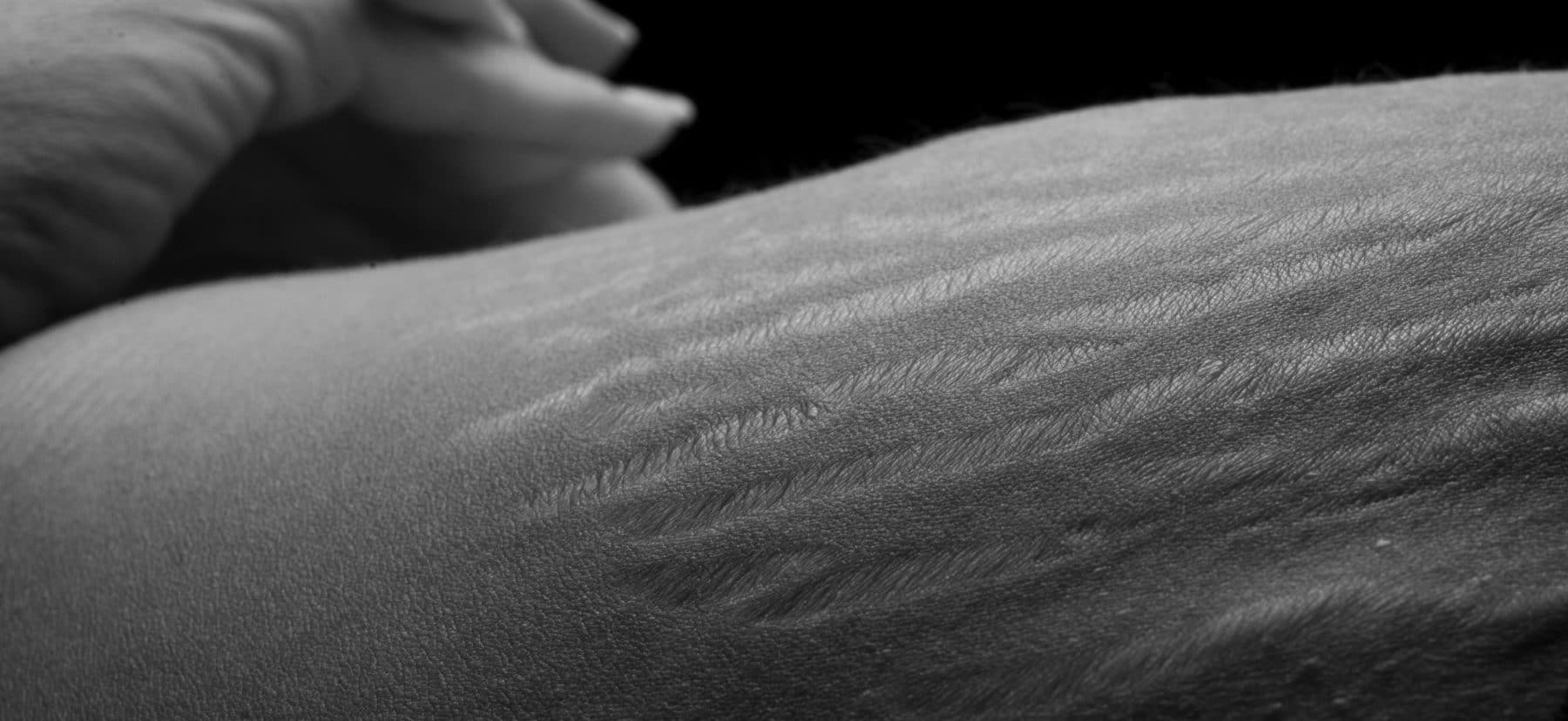
What does self-acceptance and bodywork look like? Certainly, it’s not a destination or arrival. Maybe it’s not even quite a realistic goal in this image-driven culture. I love Mary Lambert’s suggestion in her song Body Love
“Try this
Take your hands over your bumpy love body naked
And remember the first time you touched someone
With the sole purpose of learning all of them
Touched them because the light was pretty on them
And the dust in the sunlight danced the way your heart did
Touch yourself with a purpose”
Mary Lambert
Perhaps it’s a process of letting go of our ego’s nagging through questioning and inquiry of our own thoughts. It’s holding the door open to the possibility our way of thinking could be flawed. Are we flawed in thinking we are flawed?
Where do thoughts bubble up from anyway? Who puts that idea there? A marketer? Myself? Or, was that belief buried deep in my DNA?
We can only guess where thoughts come from.
The author Byron Katie has simplified this process of examining our thoughts into four simple questions simply called The Work.
- Is it true?
- Can I absolutely know that it’s true?
- How do you react, what happens when you believe that thought?
- Who would you be without that thought?
Finally, she recommends exploring opposites. What is the opposite of your thought?
For a full explanation of how to do the life-changing Work click here: http://thework.com/instruction-the-work-byron-katie/
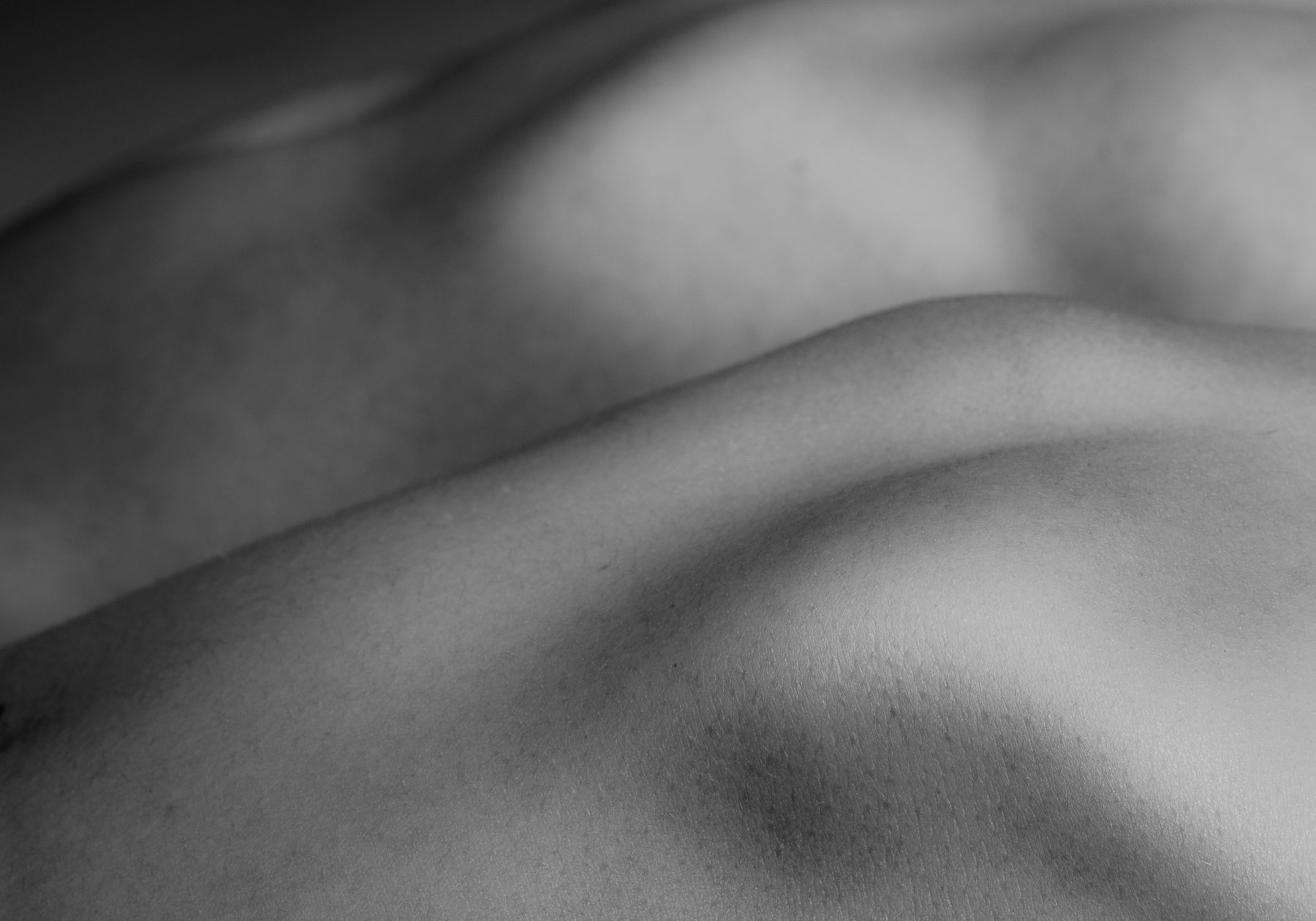
Like all practices, it’s work (pun intended) and it’s a beginning to see ourselves, our truest selves. And it only works… when you work it.
“In my opinion, attaining BODY NEUTRALITY is much easier than body positivity. Body positivity is inherently shaming in that, if you have a moment/day/week/month that you don’t happen to feel “positive” about your body/rolls/cellulite/stretch marks, then you may fall into an intense shame & guilt spiral. You might feel like a failure and like you’re doing it all wrong. It’s just really a whole lot of pressure.
Elizabeth Zimmerman, Body Image Bootcamp
Look — the body positivity movement has done a lot of good…it’s definitely started the conversation. But I feel that body neutrality is actually where it’s at!
Accepting your body for what it is – in a factual way, not positive or negative – is something you’ll need to do first anyway before reaching body positivity. Your goal may not even be to ever reach body positivity…and that’s totally okay. I don’t even think I have body positivity as a goal – it’s body neutrality for me. “
Beyond Body
Who were you before you recognized yourself in the mirror? In human development, we begin recognizing ourselves between 12 and 18 months. What was your story before then? What would it look like to go back there? With the recent passing of Ram Dass, I stumbled upon his description of a body which I hope you find as helpful as I did.
“When I was born I donned a spacesuit for living on this planet, it was this body, my spacesuit, and it had a steering mechanism which is my pre-frontal lobe and all the brain that helps with coordinating and stuff. Just like those others who go to the moon and learn to use their spacesuit…how to grab things and lift things so I learned how to do that. And then you get rewarded with little stars, kisses and all kinds of things when you learn how to use your spacesuit. You get so good at it that you can’t differentiate yourself from your spacesuit.”
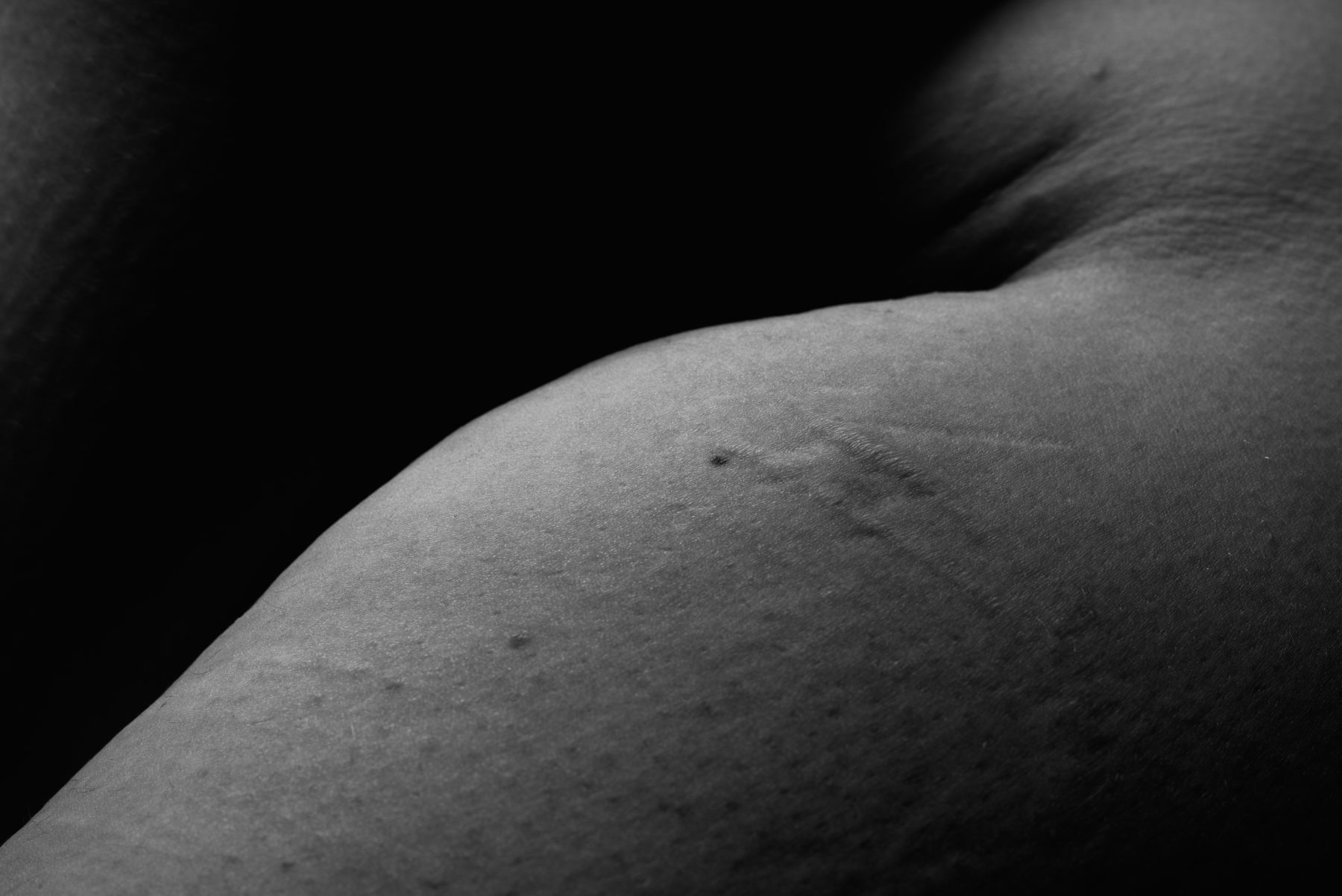
I find this interesting. I am not my body. An ideal many Eastern and Western religions seem to agree upon and one that science is catching up to.
“Our quest for happiness leads to attempts to satisfy our desires – whatever they be. But in so doing we become attached to things that are unreliable, unstable, changing, and impermanent. As long as there is attachment to things there will be suffering – when they change when they cease to be what we want them to be. Try as we might to find something in the world that is permanent and stable, which we can hold on to and thereby find lasting happiness, we must always fail. The Buddhist solution is as radical as it is simple: let go, let go of everything.”
Rupert Gethin
While it’s a beautiful idea, I’m not there yet. Can I let go of my attachments just slightly? I’m not quite ready for this Buddhist idea. I can see its value though. My mind does attach to the image of our bodies as a spacesuit. Buddhism points to the reality of our body is ever-changing. If we are attached to our ideal that this body will remain the same, we will suffer. When we use our spacesuit well it, or body if you prefer we will develop lines where we laugh, marks where we stretch and grow and scars where we bleed.
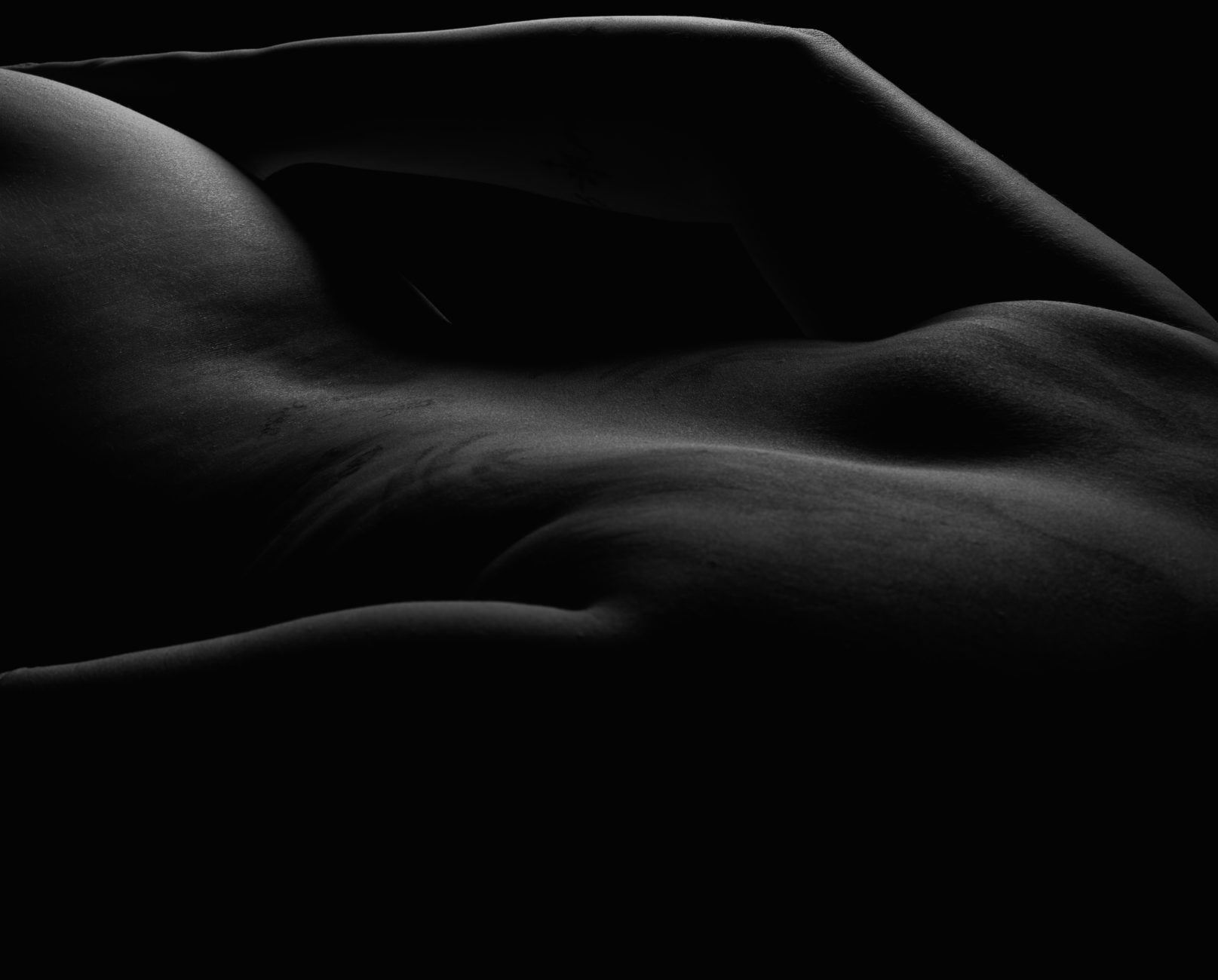
Mary Lambert paints this picture
“Love your body the way your mother loves your baby feet….
This is important
You are worth more than a waistline
You are worth more than beer bottles displayed like drunken artifacts
You are worth more than any naked body could proclaim in the shadows
More than a man’s whim or your father’s mistake
You are no less valuable as a size 16 than a size 4
You are no less valuable as a 32A than a 36C
Your sexiness is defined by concentric circles within your wood
It is wisdom
You are a goddamn tree stump with leaves sprouting out
Reborn”
An Invitation to Body Neutrality
Take this as an invitation. Like many things, this is just the beginning of a new way of seeing. Journeys aren’t straight lines, but zig-zags. You won’t shame yourself out of thinking this way. This is a journey of love. Meet your thoughts with love. Examine them. Question them. Talk to yourself with the love that you hold for your 5-year-old niece. Isn’t she is beautiful dancing in the bed in her pajamas with not a care in the world? So are you. Bathe in that light for a moment and try on that truth.
For some, this path starts with make-up, surgery, working out, movement, or gaining physical strength. I’m not here to judge your journey. These methods, like photography, are on-ramps. Choose your own adventure and turn to the next page.
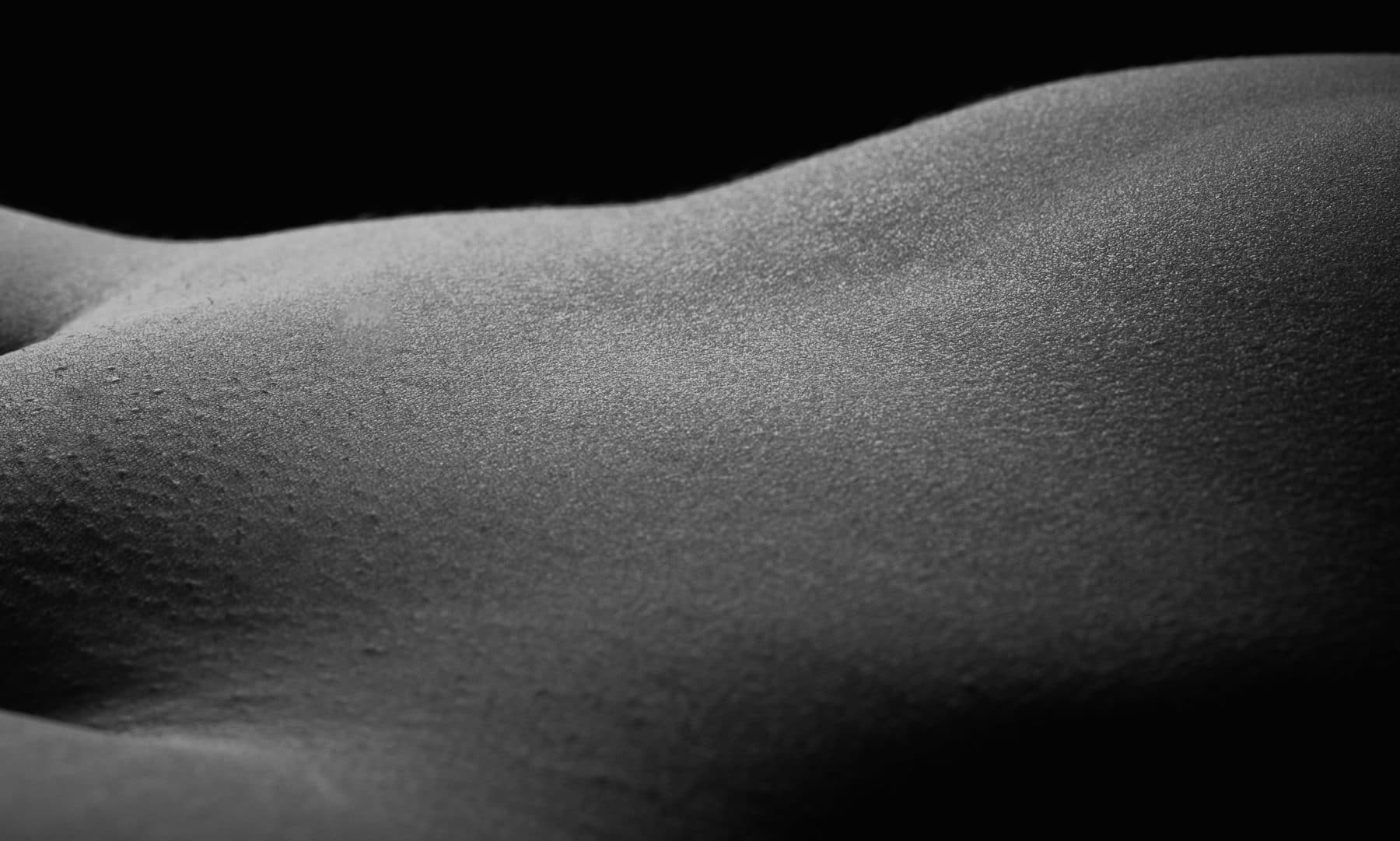
My personal journey involves running, movement, meditation, inquiry, and breath-work (read about it here). I’m not there yet. I haven’t arrived. There are days where I subconsciously or consciously avoid looking in the mirror. But this is why I hold space for others to do the work. The work looks familiar. My soul knows this path.
Lastly a note, self-love isn’t selfish. It’s the deep well where we meet others. When this water is poured into our own lives it spills out into the world. Whether we start with ourselves or others doesn’t matter. See the beauty, and when you can’t… get closer.
So my hope for you is that you know you are worthy of being seen this year. That this is a beginning to regard your stretchmarks, scars, bumps, and lumps as parts of the story. Begin to deeply love this story you are living. May you learn to love the spacesuit you’ve been wearing and share this message with sons and daughters and share new realities with the next generation. May you allow yourself to be documented, recorded and treasured. It’s time to be seen. Get in that photo!
In short, I hope this is the year you start owning your time and space.
Extra thanks to MooseKleenex (buy artwork shown here) and Terri Ledgerwood & Elizabeth Zimmerman of the Body Image Bootcamp for giving their amazing insight. Check out the Body Image Bootcamp on April 2-5, 2020 in Austin, Texas.

Check out Elizabeth’s site for more info coming soon.

Mike Allebach is a photographer of couples boudoir and tattooed weddings. Learn more about bodyscaping, boudoir and couples boudoir at allebachphotography.com or by texting 610.539.6920. Join our facebook group here
